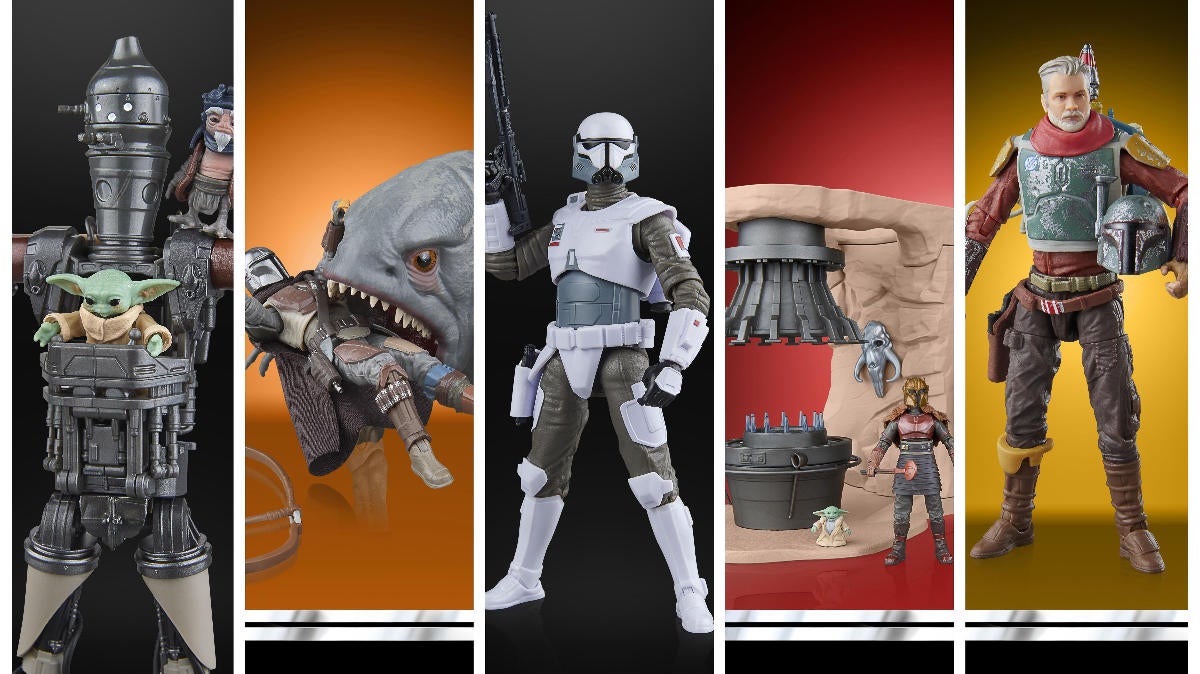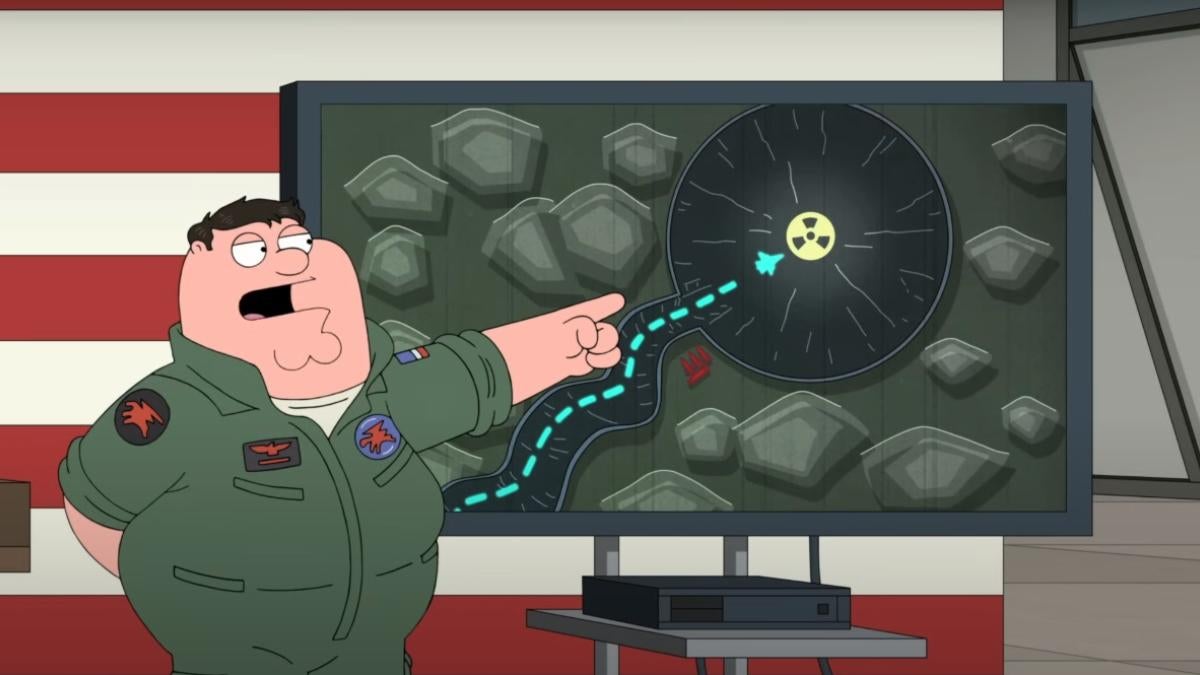Ahsoka Review: An Ambitious Star Wars Series That's Slow Out of the Gate
Star Wars: Ahsoka on Disney+ creates a cinematic experience but mostly appeals to die-hard fans.
Before The Mandalorian kicked off the era of live-action Star Wars television, only a handful of characters from that galaxy far, far away that hadn't appeared in any of the Star Wars movies had become anything close to as beloved as the heroes of the Skywalker Saga. Ahsoka Tano, Anakin Skywalker's Jedi apprentice, was one of those few. Created by George Lucas and Dave Filoni, Ahsoka first appeared in the dreadful 2008 Star Wars: The Clone Wars movie and the much better Star Wars: The Clone Wars animated series. Viewers watched the young Padawan grow up within the Jedi Order, experiencing a gradual maturation unlike anything in the Star Wars films, and one with an unexpected ending as she ultimately left the Order behind. After appearing in The Clone Wars' successor series, Star Wars Rebels, and making her live-action debut via guest appearances in The Mandalorian and Star Wars: The Book of Boba Fett, Ahsoka headlines Star Wars' latest live-action series on Disney+. Those already intimately familiar with Ahsoka's journey to date are likely to be intrigued by this next chapter, while others may appreciate its ambitions, but some will be frustrated by its reliance on characters introduced elsewhere in the Star Wars franchise or by the ways its reach sometimes exceeds its grasp.
Developed by Filoni, who wrote the entire eight-part series and directed the first episode, Star Wars: Ahsoka begins at least a decade after the climax of Star Wars Rebels, years after the conclusion of the original Star Wars trilogy, and sometime after Ahsoka's appearance in The Mandalorian's second season, building upon all of those previous stories. With the Empire defeated, The New Republic is on the rise, but Imperial sympathizers still exist, and there are whispers that one Imperial Grand Admiral is still at large. Fearing that this Grand Admiral Thrawn (Lars Mikkelsen) could unite the remnants of the Empire and start another war, the former Jedi Ahsoka Tano (Rosario Dawson) discovers a map leading to his whereabouts but cannot decipher it. She turns to her old friend, and fellow former Rebel, General Hera Syndulla (Mary Elizabeth Winstead), for help. Hera suggests Ahsoka reconnect with another member of their old cell, Sabine Wren (Natasha Liu Bordizzo), but it is clear that Ahsoka and Sabine aren't on good terms. However, Ahsoka isn't the only one searching for Thrawn, as Baylan Skoll (the late Ray Stevenson, to whom the first episode is dedicated), a former Jedi who managed to escape the Imperial purge of the Order, and his apprentice, Shin Hati (Ivanna Sakhno), unite with Morgan Elbeth (Diana Lee Inosanto), one of Thrawn's allies, and make plans to take the map from Ahsoka.
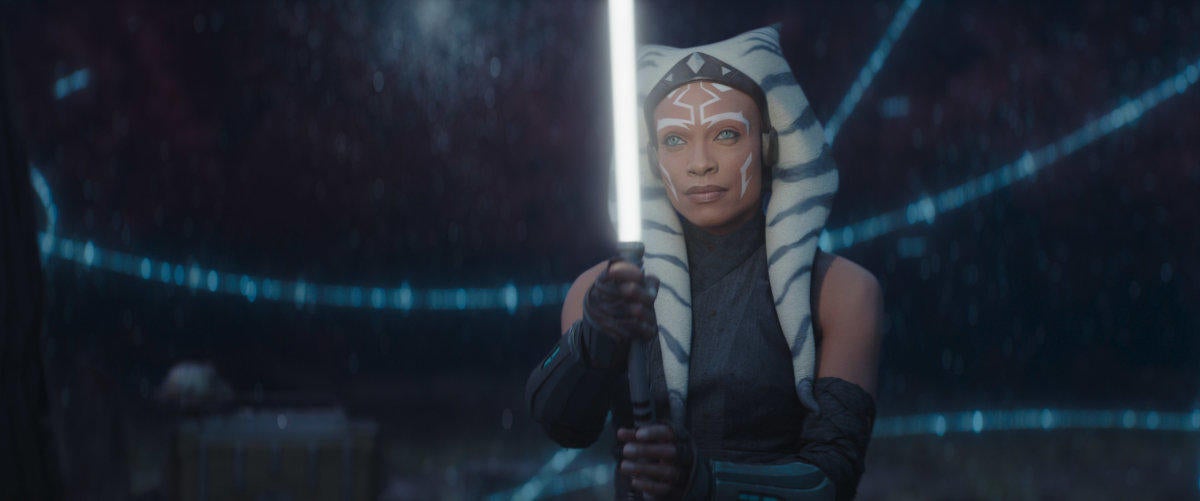
Ahsoka Tano (Rosario Dawson) in Lucasfilm's STAR WARS: AHSOKA, exclusively on Disney+. ©2023 Lucasfilm Ltd. & TM. All Rights Reserved.
- Lucasfilm Ltd.)Ahsoka opens with a text crawl, a bold leveraging of Star Wars' iconography that speaks to an apparent desire on Filoni's part to elevate these characters he's been shepherding for 15 years and their stories to the same level of prestige and import as the Skywalker Saga and the iconic heroes and villains of the Star Wars films. Utilizing Thrawn, the villain who debuted in a series of early 1990s Star Wars novels that a generation of Star Wars fans believed would be the closest thing they'd ever get to a true sequel trilogy, also speaks to that ambition. Some shots even feel pulled from those movies, such as Ahsoka in her cockpit alongside her droid co-pilot Huyang (voiced by David Tennant), or moments of Shin Hati surveying the planet Lothal that are reminiscent of Darth Maul scanning the sands of Tatooine in Star Wars: The Phantom Menace.
For all of his cinematic ambition, most of Filoni's solo writing credits are in animation, and the pacing of these episodes feels, at times, like the scripts are stretching to meet the expected length of a live-action episode. Sequences are dedicated almost entirely to the mechanics of the map device, which is nothing more than a MacGuffin (and one that is too similar to the Sith Wayfinder from Star Wars: The Rise of Skywalker), and linger for too long. The often arch, overwrought dialogue comes with a lack of urgency that, without the enthusiasm that Filoni is used to getting from uninhibited voice actors, contributes to overly practiced deliveries.
Ahsoka's stakes are also built on background that viewers may or may not have. Anyone who hasn't seen Rebels or read certain Star Wars novels has to take the show's insistence that Thrawn is a threat at face value since he doesn't appear in these opening chapters of the story. Without that, the tension and urgency in the narrative all stem from the nebulous threat of war, which comes off as mundane. This is a story set in the Star Wars universe. Was star peace ever an option? Still, the setup is big, broad, and operatic as the Star Wars films are, which meets the criteria Filoni seems to be trying to fulfill.
Similarly, the uninitiated get only a brief implication of why Sabine remains distraught over the disappearance of Ezra Bridger (Eman Esfandi), a young Jedi who went missing with Thrawn in the Star Wars Rebels series finale. In the past, I've defended the interconnectedness of Filoni's corner of the Star Wars universe -- Ahsoka's role in The Mandalorian is pretty straightforward, and that doesn't change with additional context about her history. Here, that background is more load-bearing. In almost any other show, one existing independently of a multimedia franchise, viewers might assume that the writers will eventually fill them in when the time is right. Here, it's hard to figure out what the show takes for granted or otherwise assumes the audience will learn through independent Star Wars research.

(L-R): Ahsoka Tano (Rosario Dawson) and Sabine Wren (Natasha Liu Bordizzo) in Lucasfilm's AHSOKA, exclusively on Disney+. ©2022 Lucasfilm Ltd. & TM. All Rights Reserved.
- Suzanne Tenner)If Ahsoka means to be a cinematic experience, the first two episodes available for review are the first act. While Ahsoka's name is in the title, she shares lead protagonist duties with Sabine. The show reveals early on that Ahsoka had been training Sabine as a Jedi Padawan apprentice, but that relationship didn't last. Ahsoka embarked on her quest to find Thrawn while Sabine remained on Lothal, growing lonely, listless, and verging on bitter. These first two episodes are about Ahsoka and Sabine reconnecting and bandaging up enough of their old wounds to work together again. It's only when they finally get there at the end of Ahsoka's second episode (a moment first glimpsed in the epilogue to the Star Wars Rebels series finale) that the show feels like it has laid the requisite groundwork to get to the main thrust of its story.
How viewers accept this pairing may come down to whether or not they're familiar with the duo's past adventures. For the newcomer, that this Jedi, Ahsoka, had a Padawan is easy enough to grasp, and why shouldn't it be Sabine? But for fans of Rebels, it may not be as clear-cut.
Rebels established Sabine as a headstrong Mandalorian with the heart of an artist (her armor had a paint job just shy of infringing on Lisa Frank's style) and a mind for a tech who already knows how to fight in the ways of her culture. She chafed against her tutoring the one time she briefly underwent lightsaber training and has never shown an interest in or aptitude for the Force. How did she wind up becoming a Jedi Padawan to anyone, let alone Ahsoka, who once rebuffed the Jedi Order in what this new series seems to want viewers to see as a symptom of her inability to commit and tendency to leave people behind, undermining the independent streak and capacity for critical thinking and speaking truth to authority figures that endeared her to many in the first place? It's possible that Filoni feels the need to pair Ahsoka with a Padawan to contrast her with her former master, and maybe the series will eventually unpack how Sabine is trying to be something she's not to honor Ezra's memory. As focused as these episodes are on getting the pair back together, it doesn't do much to foreshadow where their arcs will head. As is, it's an odd dynamic to force upon the characters and one that doesn't suit them as fans knew them.
Dawson's performance feels distant, as well. Her Ahsoka is subdued, delivering her lines with a consistent calm even when she should be annoyed. Perhaps it represents how much Ahsoka has matured or her strength and balance in the Force. However, for someone who's followed Ahsoka's journey, it feels like the distinct character traits of the precocious "Snips," as Anakin called her, have been subsumed by the mannerisms of a stock Jedi character.
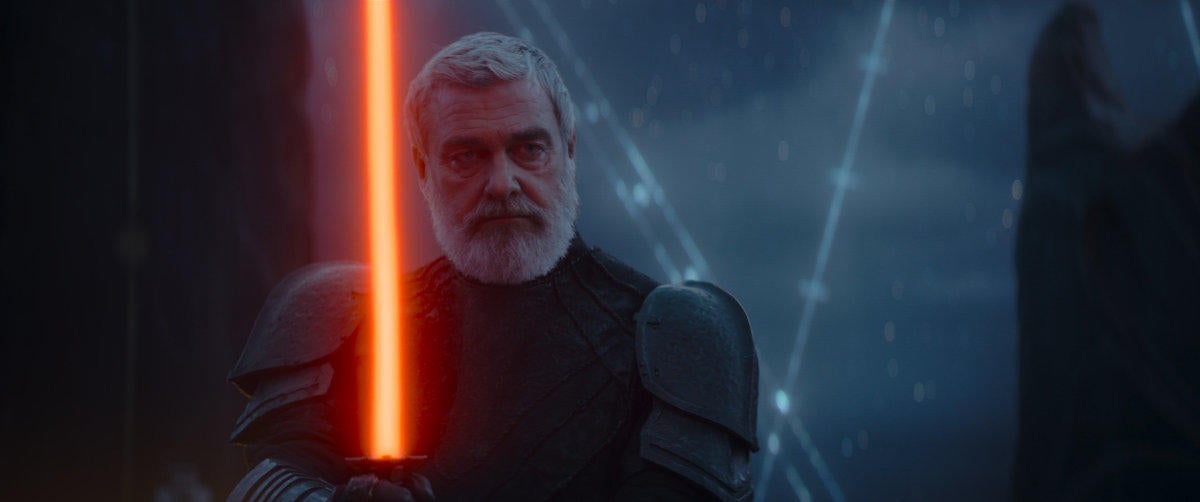
Baylan Skoll (Ray Stevenson) in Lucasfilm's AHSOKA, exclusively on Disney+. ©2023 Lucasfilm Ltd. & TM. All Rights Reserved.
- Lucasfilm Ltd.)Bordizzo's Sabine is a similarly familiar depiction, a frustrated young woman left to turn sour in a (relatively) small town. The difference is that her performance and Sabine's passive-aggressive behavior fit the situation she's in, and the moment she finally takes her Mandalorian helmet out from under her bed (where Chekov himself seemingly placed it in the foreground of several shots) signals her return to form.
Ahsoka and Sabine contrast with the master and apprentice duo of Baylan Skoll and Shin Hati. Where some of the cast are too self-conscious to pull off the sincere, sci-fi serial camp that informed Lucas' Star Wars and that Filoni seems to be reaching for, Stevenson seems entirely at home in that mode as Baylan Skoll, carrying himself with the practiced gentility and wisdom of an evil, or at least morally compromised, Obi-Wan Kenobi. To complete the set, Sakhno's Shin Hati doesn't have many lines but exudes the overeagerness of a Skywalker, reveling in every chance she has to put her skills to use.
The supporting cast acquits itself well all around. While dealing with Ahsoka and Sabine, Winstead plays Hera as an experienced, knowing, and mildly amused mother dealing with two siblings in a row and the performance charms. Elsbeth almost feels like a different character than the one introduced in The Mandalorian, growing from Imperial bureaucrat and middle-management lackey (albeit one who can stand up to a Jedi in a fight) to Thrawn's witchy visier, but Inosanto proves up to the task. Tennant sounds like he's having a great time reprising Huyang, still able to fully enjoy the comforts and freedoms of the voice booth as he is.
Ahsoka's presentation is similarly commendable. Baylan and Shin have a fresh ferocity in their fight scenes, and Sabine's fighting style feels similarly distinct, blending strength and precision. Ahsoka's lightsabers have an unusual weight to them, but it creates a style faster than the slow-paced duels of the original trilogy but with fewer spins and twirls than the flashy prequel trilogy fights.
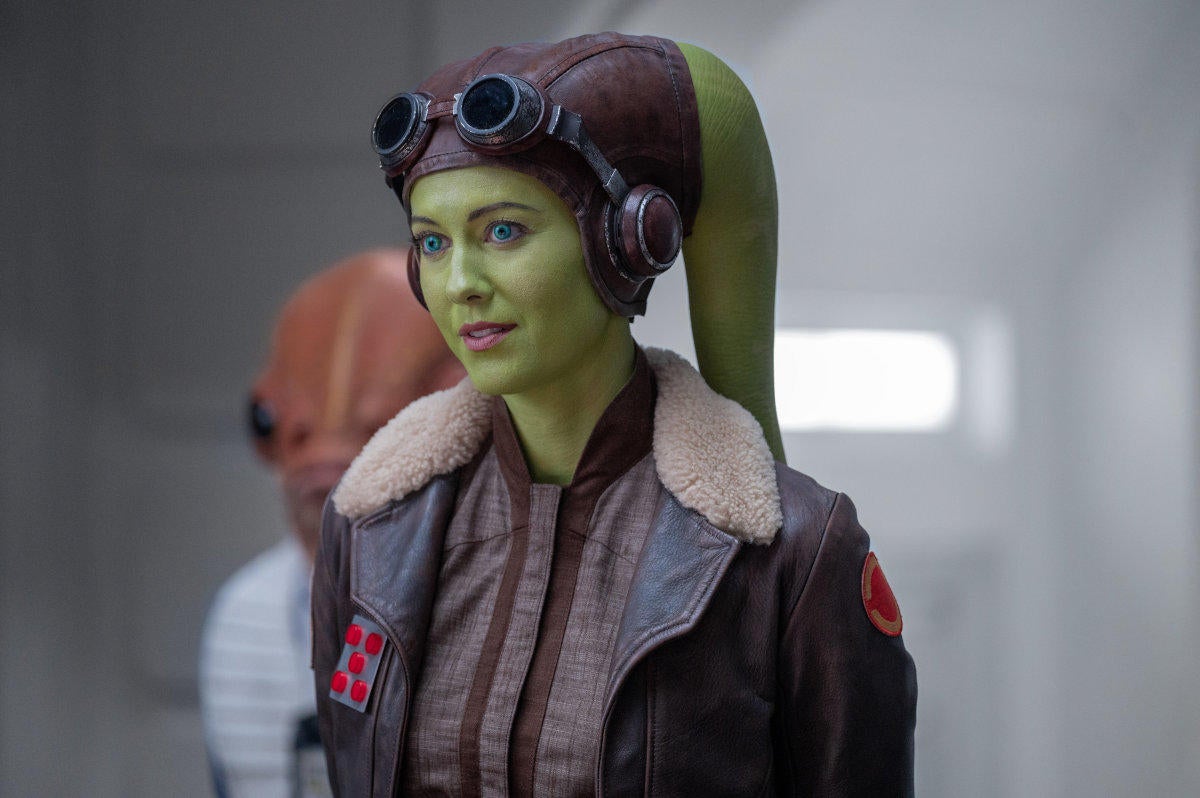
(R): Hera Syndulla (Mary Elizabeth Winstead) in Lucasfilm's AHSOKA, exclusively on Disney+. ©2023 Lucasfilm Ltd. & TM. All Rights Reserved.
- Suzanne Tenner)These battles take place on stunning vistas aided by virtual landscapes that sometimes feel a bit too unreal but mostly stand to task and benefit from established Star Wars design. Without giving too much away, Ahsoka does present an occasion for creative innovation in that department that distinguishes itself from what came before in impressively meaningful ways in a short time.
It all comes wrapped in Kevin Kilner's stellar score, alternating brash and tender. Kilner's worked on the Star Wars animated series and leverages some of those established sounds here, proving particularly successful with his repurposing of Sabine's theme from Star Wars Rebels within Ahsoka's episodes and as its closing credits theme.
In its first two episodes, Ahsoka comes off as Filoni's truest attempt to bring the feel of a Star Wars movie to television, which shouldn't be surprising given that we now know his television work is feeding into a Star Wars film he has in development. The red text of the opening crawl and the red Lucasfilm logo that precedes it conjures up memories of Star Wars: Return of the Jedi's crimson logo, drawing that connection as if to set itself up as that film's most direct successor. By all appearances, Filoni wants to create a new cinematic Star Wars experience between the original and sequel trilogies on the timeline, taking advantage of the television medium and the characters who have thrived there to do it. These imperfect opening chapters succeed at setting that stage, despite the slow pace and some questionable decisions about the positioning of its lead characters. It's a series that will appeal most to those who most love to immerse themselves in the expanded Star Wars universe, but that doesn't mean it can't appeal to patient newcomers. As the former, I may fall into the most easily targeted audience, and despite my criticisms, I still find myself eager to see the next episodes. Hopefully, the flaws in these episodes prove to be shaky first steps, and, having left Lothal behind, Ahsoka can fully right its ship and live up to its considerable potential.
Rating: 3.5 out of 5
Ahsoka's first two episodes debut on Disney+ on August 22nd. Subsequent episodes of Ahsoka premiere on Disney+ on Tuesdays at 9 p.m. ET.



